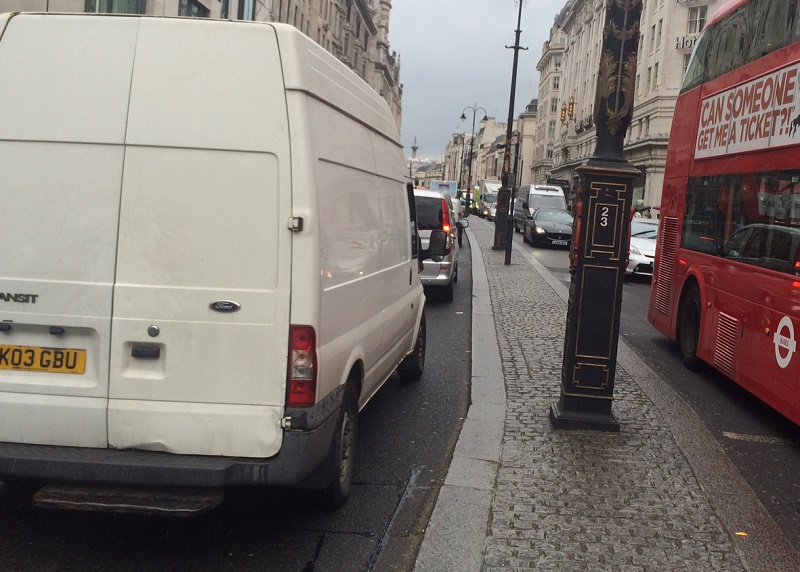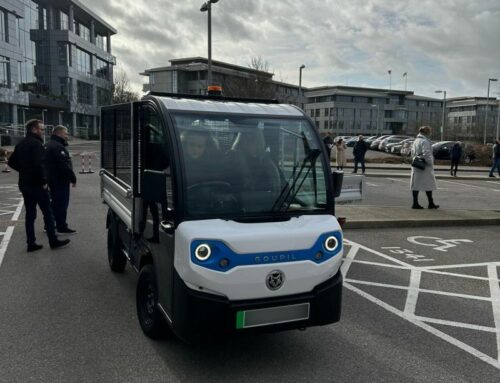London T-Charge: the key points
- £10 T-Charge to be introduced in central London from October 23 – autumn half-term 2017
- Applies in £11.50/day Congestion Charge zone same hours 7am-6pm Monday to Friday, taking daily cost to £21.50 or more than £100/week
- Vast majority of pre-2006 vehicles will get extra charge
- Mayor’s new online car compliance checker will let motorists see if they will have to pay
- Move follows call last week by Sadiq Khan and the leaders of Derby, Nottingham, Leeds, Birmingham and Southampton councils to Prime Minister Theresa May to curb pollution
LONDON Mayor Sadiq Khan has confirmed that his £10 toxic T-Charge, the toughest emission standard of any world city hitting most vehicles over 11 years old, will start in central London on October 23 this year. But it’s going to get even tougher for van operators.
To forewarn motorists, the Mayor launched a free online vehicle checker on the Transport for London website so that drivers can see whether their vehicle – typically both petrol and diesel more than 11 years old – will be affected by the T-Charge or Emissions Surcharge.
The new charge will run until superseded by the Ultra Low Emission Zone legislation scheduled for 2020.
Up to 10,000 of the oldest, most polluting vehicles are expected every weekday to be potentially liable for the new emissions levy, which will apply to motorists who own vehicles that do not meet Euro 4 standards – generally every kind of vehicle, diesel and petrol, registered before 2006.
The Emissions Surcharge standards are tighter than the LEZ standards, meaning that even if your vehicle meets the Low Emission Zone standards you will need to check if your vehicle meets the Emissions Surcharge standards or pay up from October.
The T-charge (also known as the Emissions Surcharge) will operate on top of, and during the same operating times, as the Congestion Charge (Monday to Friday 7am-6pm), so it will cost £21.50 to drive a pre-Euro 4 vehicle in the zone.
Exemptions include fire engines and ambulances and breakdown vehicles exempted from the Congestion Charge, as well as Blue Badge holders.
The announcement has been welcomed by the Freight Transport Association. Natalie Chapman, FTA’s Head of Policy for London, said: “It is incumbent on all of London’s road users to work together to reduce emissions in the capital, to help improve the city’s air quality.
“The freight industry has been meeting tougher emissions standards for nearly ten years, with transport companies complying with the London-wide Low Emission Zone. The announcement brings cars and the small minority of older more polluting vans and trucks into line with the LEZ requirements, and will undoubtedly benefit Londoners in health terms.”
But she warns that accelerating the introduction of the Ultra Low Emission Zone to 2019, and expanding the area covered, is a potentially more serious problem.
Air pollution in London is a public health crisis and the Mayor has been forced to take hard-hitting action to tackle it head on. Currently over 9,000 Londoners die prematurely each year as a result of long-term exposure to air pollution – while 438 schools in the capital are in areas exceeding legal air quality levels.
The Mayor of London, Sadiq Khan, said: “It’s staggering that we live in a city where the air is so toxic that many of our children are growing up with lung problems. If we don’t make drastic changes now we won’t be protecting the health of our families in the future.
Vehicles included
- Cars, vans, minibuses, buses, coaches and Heavy Goods Vehicles, motorised caravans and horseboxes, breakdown and recovery vehicles, private ambulances, motor hearses, dual purpose vehicles and other specialist vehicle types that do not meet the minimum Euro emission standards are subject to the Emissions Surcharge.
- Motorcycles are not liable.
“That is why today, on the 14th anniversary of the start of the congestion charge, I’ve confirmed we are pressing ahead with the toughest emission standard of any major city, coming to our streets from October 23 .
“Londoners overwhelmingly support my plans to introduce this £10 charge because they feel when it comes to battling pollution the time for action is now.
“The T-Charge is a vital step in tackling the dirtiest diesels before I introduce the world’s first Ultra Low Emission Zone as early as 2019.
“I will continue to do everything in my power to help protect the health of Londoners and clean our filthy air. But now is the time for Government to show real leadership and join me by introducing a diesel scrappage fund and bring in the new Clean Air Act we desperately need.”
Leon Daniels, TfL’s Managing Director of Surface Transport, said: “London’s air quality crisis is one of the biggest challenges we face and we are working alongside the Mayor to address it.
“The T-Charge is a crucial part of this work and will discourage drivers of the oldest, most polluting vehicles from driving in central London. To help drivers we have created an online compliance checker, which can be found on the TfL website, that enables people to easily establish whether they will be affected by the charge.”
Like the Congestion Charge, the T-Charge will use a camera-based system for enforcement, monitoring all vehicles, and is just one of the wide range of measures the Mayor is introducing to improve air quality.
The Mayor has doubled funding spent on tackling air quality to £875million (over the next five years) and will be consulting on introducing the start the central London ULEZ in 2019, expanding the ULEZ up to the North/South Circular roads and making it London-wide for heavy vehicles as early as 2019.
This is where the FTA warns that the changes to the planned Ultra-Low Emission Zone are likely to impact on a much larger number of organisations.
Natalie Chapman said: “The Ultra-Low Emission Zone is going to have a far bigger impact on the freight industry as a whole, especially if the Mayor decides on an earlier start date than the original plan of 2020 and widens out the geography of the zone beyond the Congestion Charge area.
“FTA is particularly concerned about the effect its introduction will have on van operators, not least because the new Euro 6 – the ULEZ standard – was introduced for new vans registered from last September.
“This means that vans which are little more than two years old could be banned from the capital’s roads, which will put a strain on London’s supply chain and cause financial hardship for many SMEs across the region.
What’s the clean solution?
- Check out Five of the lowest CO2 vans
“FTA will continue to negotiate with the Mayor’s office to ensure that our members can keep London moving, while maintaining improvements in the capital’s air quality.”
The Mayor is also spending more than £300m transforming London’s bus fleet by phasing out pure double-deck diesel buses and has committed to purchase only hybrid or zero-emission double-decker buses from 2018.
Vehicle owners can use a specially created online vehicle compliance checker, on the TfL website to establish whether their vehicle is affected by the T-Charge and get advice on what action, if any, they need to take. At present it is rather unwieldy, but it’s soon to be streamlined with a DVLA database link.







Good idea but very expensive